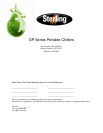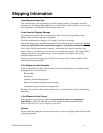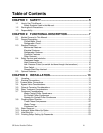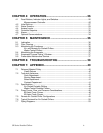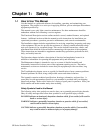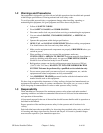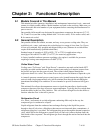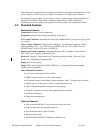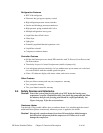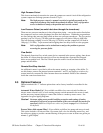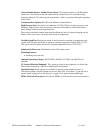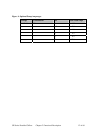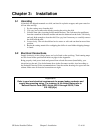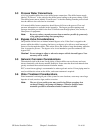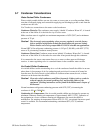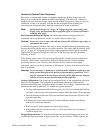
GP Series Portable Chillers Chapter 2: Functional Description 7 of 64
Chapter 2: Functional Description
2-1 Models Covered in This Manual
This manual provides operation, installation, and maintenance instructions for air-, water-and
remote air-cooled portable chillers. Model numbers are listed on the serial tag. Make sure you
know the model and serial number of your equipment before contacting the manufacturer for
parts or service.
Our portable chiller models are designated by approximate compressor horsepower (5,7 1/2,
10, 13 and 15 etc) and the cooling method used: -A for air-cooled, -W for water-cooled, and –
R for remote-air cooled.
2-2 General Description
Our portable chillers are reliable, accurate, and easy to use process cooling units. They are
available in air-, water-, and remote air-cooled designs in a range of sizes from 5 to 15 tons.
All are self-contained, fully portable and shipped ready to use. (Remote air-cooled chillers
require field installation by qualified technicians.)
Standard range of operation is 20ºF to 80ºF (-7ºC to 27ºC) for applications using a
water/glycol mix and 45ºF to 80ºF (7º to 27ºC) for water only applications.
A factory installed crankcase pressure regulating valve option is available for processes
requiring a leaving water temperature over 80ºF (27ºC).
Chilled Water Circuit
Cooling water “To Process” and “From Process” connections are made at the female NPT
couplings provided outside the unit. Warm coolant (water and glycol mixture) returns from
the process and goes into the reservoir tank. The coolant is then pumped through the
evaporator where it is cooled. The coolant flows to the process and returns to repeat the cycle.
A (manual) pressure actuated process water bypass valve located between the supply line and
reservoir tank (single pump models only) allows minimal flow through the unit during the
intermittent fluctuating flow conditions. It is not intended to provide continuous full bypass
flow.
This minimal flow allows the temperature sensor to signal the controller to shut down the
compressor because of the drop in process water temperature. Typically the flow switch shuts
down the chiller in this low flow condition. This valve allows enough flow for the chiller to
function when the flow is shut off to process.
Refrigeration Circuit
Air-, water-, and remote air-cooled refrigerant condensing differ only in the way the
compressed gas is condensed to a liquid.
Liquid refrigerant from the condenser heat exchanger flowing in the liquid line passes
through a shut-off valve into a filter/dryer that removes moisture and other contaminants. A
refrigerant sight glass is provided. The refrigerant then passes through the thermal expansion
valve, which allows the refrigerant to expand (boil off) and cool (remove the heat from) the
fluid inside of the evaporator. The refrigerant gas flows through the suction line back into the
compressor.



